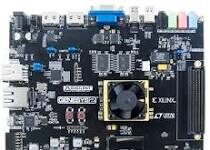If you are thinking that tax professionals still stay in their office for the whole night during the tax season then you are completely wrong. Gone are those days when tax season meant a hectic, exhausting and mind-numbing period for both tax professionals and businesses. And all the credit goes to the technological advancement that we have achieved through many years of effort and dedication. The introduction of technological advancement has simplified the tax world for both tax professionals and businesses.
There are many technological solutions that have together contributed towards making tax season less-hectic. Technological innovations like cloud computing in the form of hosted QuickBooks have acted as a revolution in making the tax filing process simple and seamless but there is one more technological innovation that is acting as a magic wand for tax professionals and it is known as Artificial Intelligence.
The advent of AI is nothing less than a miracle for the world. From intelligent robots to analyze a large chunk of data and finding hidden patterns, AI is being used in some of the advanced technological platforms. But along with making the IT sector more advanced. AI is helping tax professionals as well. There are many applications of AI that have not only simplified the tax filing process but have also contributed towards making the tax professional more productive and quick.
You should know that most of the task involved in task filing is repetitive and involves analysis of a large amount of financial data. And this is what AI is good at. There is no denial in the fact AI is still in its infant stage but even in its early stage, it is proving to be very beneficial to the tax world. Therefore, in this blog post, we will go through some of the different applications of AI in the tax industry and understand how it is proving to be beneficial for both tax professionals and businesses.
Also Read: A Brief Description of Tax Lien
Automating Repetitive Tasks
Most of the tax professionals are involved in doing the same task again and again, which doesn’t only make it repetitive but also makes the task dull and boring. Tax professionals keep clicking on the same button to generate reports or to follow the same series of actions to generate a list of assets every time they need one. Dealing with repetitive tasks on an everyday basis also affects the productivity of the tax professionals but thanks to Robotic Process Automation that almost all the repetitive tasks can be automated.
A tax professional can program his computer by using tax robotics so that it can go to a particular website for running tasks. For example, if you always enter the ID number in a spreadsheet and then run a report with specific filter criteria, then you can program your computer to fill those numbers in ahead of time. After programming the computer, RPA will simply mimic all your actions and then it will generate the required report for you.
RPA is becoming very common in accounting processes like invoice payment, reconciliation, and closeouts. One of the best examples of how RPA is being used in accounting is QuickBook on the cloud where tax entries are automatically processed into QB from a spreadsheet.
Machine Learning Can Help in Dealing with Tax Documents
Tax professionals spend lots of time in taxonomy, data extraction, and classification. But with the help of machine learning, processes like tax document analysis, identification of the sender, entering data in software systems and much more. One of the best machine learning based program is MetaTaskerPT which is helping in the following operations:
Document classification: The advanced MetaTaskerPT puts questions in front of the on-demand labor platform workers and asks them to identify the documents. Some of the most common questions asked by the software program are; what is the type of document? Who is the collector? Who is the assessor? An answer is considered right only if it matches with three other people. By using this classification process, the document is classified very easily.
Taxonomy: Even in taxonomy, the advanced software program poses several questions in front of the labor platform workers. Is there an account number? How many payments are present on the bill? Which type of discount has been entered into the tax bill? With the help of taxonomy, one can understand what is present on which type of document.
Extraction- After document classification and taxonomy, the software finally understands what included in the document and which type of document it is. By using the machine-generated answers, MetaTaskerPT will soon replace human data processes.
Also Read: Amazing Apps to Take Your Creative Writing to the Next Level
Machine Learning Can Be Used for Classification of Tax-Sensitive Transactions
Almost all the tax professional classify the tax-sensitive transactions manually and in addition to being time-consuming, such type of practice is also prone to errors as well. But by developing machine learning algorithms, one can search and identify assets that are that have been entered incorrectly into some specific accounts on the basis of historical classification that your team has made.
By using machine learning classification of tax-sensitive transactions, you will be able to reduce the total number of manual reviews significantly. From 50,000 manual reviews, you will be able to come down to 300 manual reviews per year. This will not only save a lot of time but will also help in enhancing the overall productivity of your team.
Artificial Intelligence Can Be Used for More Accurate Tax Forecasting
With the help of AI, you can transform tax forecasting from just a simplistic modeling technique to advanced predictive analytics. For example, specially designed algorithms can easily analyze both corporate and seasonal data and then use it to identify trends within different tax filing lifecycle. These trends can be further used for predicting what can happen in the future.
In addition to the above-mentioned applications, AI can also be used for detecting tax frauds and identifying possible tax deductions as well. With the advancement of time, AI will automate many tax-related tasks and it will help tax professionals to focus on other important things.
Also Read: Why You Need a Right Contractor Accountant for Your Business











![Extratorrents Is Down : Here Are The Best Alternatives To Extratorrent Top 14 ExtraTorrent Alternatives + 12 Mirror Sites [Updated 2020]](https://www.todaytechmedia.com/wp-content/uploads/2020/02/featured-100x70.jpg)